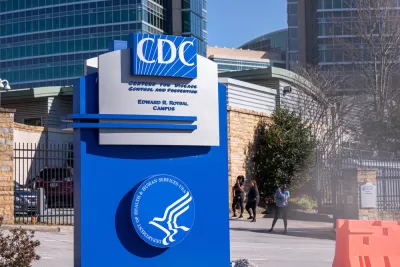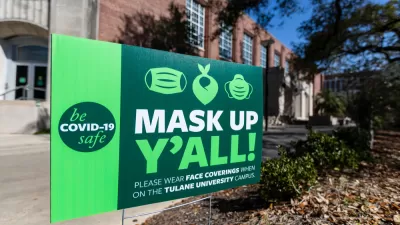All eyes are fixed on New York City, the epicenter of the COVID-19 outbreak with its skyrocketing deaths, but the six counties with the highest number of coronavirus deaths per capita are in two Southern states as of April 1. Manhattan is #7.

"Louisiana and Georgia have the six counties with the highest number of covid-19 deaths in the country per capita, followed by New York County in seventh place, according to data presented by Louisiana Gov. John Bel Edwards (D) at a news briefing Wednesday afternoon," according to a April 1, 2:36 p.m. "live update" by David Montgomery of The Washington Post.
St. John the Baptist Parish, La., about 30 miles west of New Orleans, leads the nation with 27.8 deaths per 100,000 residents, followed by Orleans Parish — the city of New Orleans — with 25.8.
Lee County and Dougherty County, Ga., in and around Albany, are next, with 20.2 and 19.7 deaths per 100,000 residents, respectively. Jefferson Parish, outside New Orleans, and St. Charles Parish, west of New Orleans, follow with 13.1 and 11.3 deaths per 100,000 residents, respectively.
New York County (11.1), Wayne County, Mich. (6.8), King County, Wash. (6.7), and Miami County, Ohio (5.6), fill out the top 10.
In a separate piece published a day earlier, Montgomery reports that the ventilator supply is a key concern. "The state has ordered 14,000 in the past few weeks and received just 292, Edwards said."
Even with the shipment of 150 promised by President Trump, Edwards said they will reach their capacity for COVID patients in intensive care units (ICU) on April 6. "We expect people will die because they will not be able to receive the care that they need," he added.
Edwards pointed to high chronic health conditions per capita in his state as one of the reasons for the high death rate. Medical experts said that Mardi Gras held in New Orleans on Feb. 22 likely accelerated the crisis, according to a deep dive by The New York Times. [Ed.: The New York Times article has attracted strong criticism online for generalizing about the U.S. South, neglecting issues of race and social justice, and more. But the source of that controversy originated from a different article.]
Edwards issued a statewide stay-at-home order on March 22 and Gov. Brian Kemp (R) announced on April 1 that he would issue a shelter in place order, though it didn't appear on his website on Wednesday evening.
Hat tip to Rachel Maddow.
Related in Planetizen:
FULL STORY: Louisiana parishes lead the nation in covid-19 deaths per capita

Alabama: Trump Terminates Settlements for Black Communities Harmed By Raw Sewage
Trump deemed the landmark civil rights agreement “illegal DEI and environmental justice policy.”

Study: Maui’s Plan to Convert Vacation Rentals to Long-Term Housing Could Cause Nearly $1 Billion Economic Loss
The plan would reduce visitor accommodation by 25% resulting in 1,900 jobs lost.

Planetizen Federal Action Tracker
A weekly monitor of how Trump’s orders and actions are impacting planners and planning in America.

Wind Energy on the Rise Despite Federal Policy Reversal
The Trump administration is revoking federal support for renewable energy, but demand for new projects continues unabated.

Passengers Flock to Caltrain After Electrification
The new electric trains are running faster and more reliably, leading to strong ridership growth on the Bay Area rail system.

Texas Churches Rally Behind ‘Yes in God’s Back Yard’ Legislation
Religious leaders want the state to reduce zoning regulations to streamline leasing church-owned land to housing developers.
Urban Design for Planners 1: Software Tools
This six-course series explores essential urban design concepts using open source software and equips planners with the tools they need to participate fully in the urban design process.
Planning for Universal Design
Learn the tools for implementing Universal Design in planning regulations.
Caltrans
Smith Gee Studio
Institute for Housing and Urban Development Studies (IHS)
City of Grandview
Harvard GSD Executive Education
Toledo-Lucas County Plan Commissions
Salt Lake City
NYU Wagner Graduate School of Public Service





























